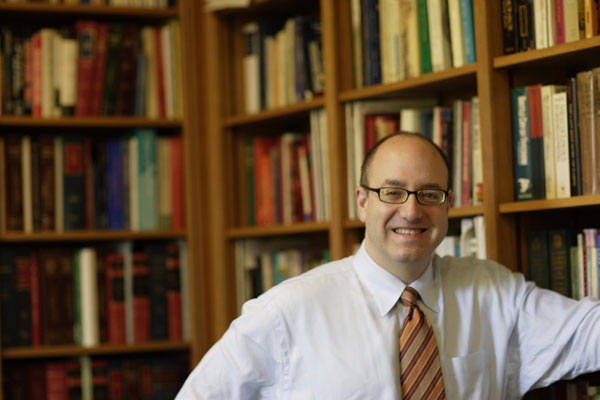Dean Larry Kramer to leave Stanford Law School to lead Hewlett Foundation
Kramer, the law school dean since 2004, has spearheaded new opportunities for legal education at Stanford.
Larry Kramer, the dean of the Stanford Law School since 2004, has announced that he will depart the university to assume the presidency of the William and Flora Hewlett Foundation on Sept. 1.
During Kramer's tenure, the law school has spearheaded new opportunities for legal education and a multi-dimensional JD degree that combines law with the study of other disciplines. The education effort emphasizes team-oriented, problem-solving techniques together with expanded clinical training that allows students to represent clients and litigate cases while in school.
Kramer also spearheaded a renewed commitment to public service and public interest law, underscoring the value of pro bono service as part of any legal career.
He has championed deeper integration between the law school and the broader university, encouraging law students to be more multidisciplinary while also integrating law into disciplines throughout Stanford, such as engineering, business and medicine.
"Larry Kramer transformed the Stanford Law School, both physically and programmatically. He pioneered a new vision of legal education and then oversaw the creation of a physical plant capable of supporting the new program. His vision has benefited not only law students but the university at large, by integrating the law school with the rest of the university," said Stanford Acting President and Provost John Etchemendy. "Larry is a national leader in legal academia and a university leader at Stanford. His impact has been tremendous and he will be missed."
Etchemendy will conduct a search for Kramer's successor. Kramer will leave Stanford on Aug. 31 to lead the William and Flora Hewlett Foundation, a Menlo Park-based philanthropic organization focused on solving social and environmental problems around the world, with an endowment of more than $7 billion.
"It has been an incredible honor to work at Stanford Law School these past eight years," said Kramer, the Richard E. Lang Professor of Law and Dean. "I had the privilege to work with amazingly talented faculty, staff and students – to support their innovative scholarship and work and be part of what I believe is easily the world's best university. It has been an exciting time of great change and equally great challenges, but the law school has a strong, positive trajectory, and I can't wait to see the direction it takes under future leadership."
Kramer championed alignment with the broader university's teaching and research efforts. He modified the law school academic calendar from semesters to quarters to integrate with the rest of Stanford University and easily allow law students to take courses outside the law school, resulting in 28 formal individual joint degrees and limitless opportunities to customize a joint degree.
Law students have now registered for more than 600 classes outside the law school each year – a twentyfold increase from six years ago – and non-law student registrations for courses at the law school have grown by a similar amount. The physical campus of the law school was expanded to create an integrated, interdisciplinary living and learning environment with a new academic building and a housing complex designed specifically to mix law students with graduate students in other fields.
In addition, the law school has added a dozen new centers and programs that provide more research opportunities for students and faculty. And law students also have increased opportunities to practice, with more law clinics and clinical rotations based on a medical-school model. In 2010, 65 percent of second- and third-year law students took a clinic.
Under Kramer's leadership, the school also developed a wide variety of new programs to give law students the direct experience of studying and working in a global setting, and expanded the international dimension of its curriculum to emphasize international business, trade and tax, as well as national security. International students now make up 15 percent of the upper-level student body.
In 2007, Kramer launched the John and Terry Levin Center for Public Service and Public Interest Law, which offers future lawyers of every professional ambition diverse intellectual resources and hands-on opportunities in public service. Results of this renewed commitment have included:
- Expansion of the school's pro bono program;
- Expansion of the school's summer public interest fellowships to enable students to work in public interest organizations while in law school, with 699 summer fellowships awarded during Kramer's tenure;
- Founding of a series of national public service and public interest awards.
Kramer has been a board member of Equal Justice Works since 2008. He previously served as the associate dean for research and academics and the Russell D. Niles Professor of Law at New York University. His scholarship has focused on constitutional law and history, federal courts, conflict of laws and civil procedure.
Kramer graduated magna cum laude and Order of the Coif from the University of Chicago Law School in 1984. He clerked for Judge Henry J. Friendly of the U.S. Court of Appeals for the 2nd Circuit and then for U.S. Supreme Court Justice William J. Brennan. Kramer joined the faculty at the University of Chicago Law School in 1986 and became a full professor in 1990. He moved to the University of Michigan Law School in 1991 and then to NYU in 1994.
Media Contact
Lisa Lapin, University Communications: (650) 725-5456, lapin@stanford.edu


Share This Story